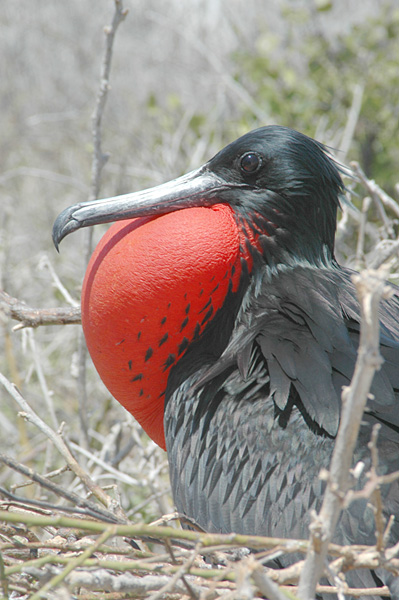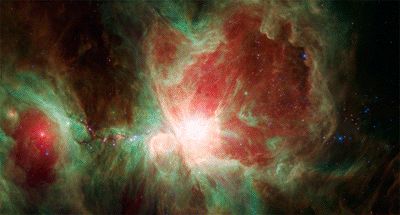APOD Robot wrote: In fact, red spots along the dark dusty filament to the left of the bright cluster include the protostar cataloged as HOPS 68, recently
found to have crystals of the silicate mineral olivine within its
protostellar envelope.
From Wikipedia, the free encyclopedia
Jump to: navigation, search
For the river in New Zealand, see Olivine River.
Olivine
General
Category Mineral Group
Chemical formula (Mg, Fe)2SiO4
Identification
Color Yellow to yellow-green
Crystal habit Massive to granular
Crystal system Orthorhombic
Cleavage Poor
Fracture Conchoidal – brittle
Mohs scale hardness 6.5–7
Luster Vitreous
Streak White
Diaphaneity Transparent to translucent
Specific gravity 3.27–3.37
Optical properties Biaxial (+)
Refractive index nα = 1.630–1.650
nβ = 1.650–1.670
nγ = 1.670–1.690
Birefringence δ = 0.040
References [1][2][3]
The mineral olivine (when gem-quality also called peridot) is a magnesium iron silicate with the formula (Mg,Fe)2SiO4. It is a common mineral in the Earth's subsurface but weathers quickly on the surface.
The ratio of magnesium and iron varies between the two endmembers of the solid solution series: forsterite (Mg-endmember) and fayalite (Fe-endmember). Compositions of olivine are commonly expressed as molar percentages of forsterite (Fo) and fayalite (Fa) (e.g., Fo70Fa30). Forsterite has an unusually high melting temperature at atmospheric pressure, almost 1900 °C, but the melting temperature of fayalite is much lower (about 1200 °C). The melting temperature varies smoothly between the two endmembers, as do other properties. Olivine incorporates only minor amounts of elements other than oxygen, silicon, magnesium and iron. Manganese and nickel commonly are the additional elements present in highest concentrations.
Olivine gives its name to the group of minerals with a related structure (the olivine group) which includes tephroite (Mn2SiO4), monticellite (CaMgSiO4) and kirschsteinite (CaFeSiO4).
 Spitzer's Orion
Spitzer's Orion


